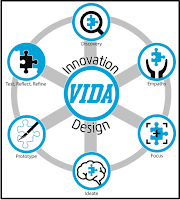A Thankful, Experienced Teacher
I was hired two days before the beginning of the school year. The office manager handed me a set of keys and directed me to a portable. “Do you know what I will be teaching?” I asked because I had been given no more information than that I had a job. The call came at 7:00 am and I had been told to arrive before the staff training at 10:00. I woke my 11-year-old daughter and told her she needed to get her little brother up and dressed. As I showered and dressed my mind was reeling. Who would watch my kids today? When would I take them back-to-school shopping? What was I teaching? Was I ready for this? I texted the teenager down the street who agreed to watch the kids, raced to my new job and presented myself in the office at 9:45 to get my keys.
The office manager shrugged her shoulders, then offered, “Most of the people in the portables teach 7th grade.” I only had time to glance in my new home-away-from-home portable before heading to the training. The carpet was orange and threadbare. Each wall was a different color in a spectrum from beige to an orangy brown. The student desks were mismatched. The teacher desk was tilted (I later discovered that it was missing a leg) and made from some kind of greenish metal. There was a file cabinet and I soon learned that the top drawer was permanently locked and the bottom drawer contained a large, rather heavy, chain. (At some point I naively tried to remove the chain only to discover that it was necessary to prevent the cabinet from tipping over.)
Day 2 - I brought my daughter with me. We covered the holes in the walls with denim and made them look like bulletin boards, propped the teacher desk up on some old books, hung posters over the most offensive stains, and arranged the school supplies that I had bought with the grocery money the night before. At some point a cart of textbooks arrived. Apparently I would be teaching 7th grade Math and Science . . . in 19 hours!
A teacher named Brent stopped by my room. He helped me figure out how to find, set up, and use a document camera and projector. Those first few months I called on him frequently, and he was always willing to help with technology, content resources, or anything else a struggling new teacher could need.
My first weeks were exhausting as I balanced my teaching responsibilities with parenting and the part-time job that had not yet found my replacement. I worked hard to engage my students, but knew that I needed to build my skills in creating a dynamic classroom that still incorporated structures and routines. I went and observed a teacher named Michelle who made it seem easy. Things started to get better.
Over my first two years I had the opportunity to continue observing the more experienced teachers around me. A teacher named Krissy showed me how to juggle multiple activities and control the classroom with calm and humor. A teacher named Desiree helped me learn how to approach the disparate needs of my students in special education programs. I learned to speak with my students and not at them by watching a teacher named Dana. Understanding that I needed to consider the physical and emotional needs of my students as well as their academic needs came from a teacher named Lori.
Eventually, with the support and modeling from these more experienced teachers, I grew into a more effective educator myself. Even so, I continue to learn from those around me. I am continually thankful for the energy, ideas, and support from my fellow teachers, most of whom are now younger and less “experienced“ than I. So if I haven’t said it before, thank you to Brent, Michelle, Krissy, Desiree, Dana, and Lori, as well as the multitude of teachers who have come after them.

